Do you have a question about the Helios easyControls 3.0 KWL 200 W and is the answer not in the manual?
General safety instructions and observance of regulations.
Explains safety symbols (DANGER, WARNING, CAUTION, ATTENTION).
Lists personal protective equipment and general safety rules.
Specifies qualifications for installation, operation, and maintenance.
Procedures for handling and checking the delivered unit.
Instructions for inspecting the shipment for damage upon delivery.
Recommendations for proper storage to prevent damage and contamination.
Rules for joint operation with fireplaces and general building law requirements.
Guidelines for planning, designing, and installing ventilation ducts.
Outlines conditions under which warranty ceases to apply.
Diagram and labels identifying unit components.
Explains how the heat exchanger and air circulation work.
Tables and graphs detailing casing-radiated sound power levels.
Mentions availability of additional accessories and where to find information.
Guidance on selecting the optimal location and required clearances for the unit.
Instructions for installing the condensate drainage siphon.
Safety warnings and instructions for connecting the unit to the power supply.
Instructions for connecting the unit to networks and accessories.
How to connect the network cable to a router or PC.
How accessories are connected via the external terminal box.
Overview of requirements for initial unit setup and operation.
Steps to run the setup wizard for initial configuration.
Lists prerequisites that must be met before unit adjustment.
Details equipment and procedure for pressure measurement.
Overview of ways to operate the unit (web server, cloud, control elements).
Instructions for setting up and accessing the unit's local web server.
Information on using the cloud service for remote access and status.
Details on optional control elements like KWL-BE Eco/Touch.
How to integrate the unit into a building control system via Modbus or KNX.
Introduction to the easyControls software for unit configuration.
Overview of the homepage interface and ventilation profiles.
Explanation of the different predefined ventilation modes.
Displays current supply, extract, exhaust, and intake air temperatures.
Lists various unit status information like model, software version, etc.
Displays data from connected sensors.
Graphical representation of temperatures and sensor data.
General unit data overview.
Displays status, last power failure, and operating time.
How to adjust time, date, and daylight saving settings.
Detailed unit information like model, software version, UUID, etc.
Access to service functions like temperatures, self-diagnosis, and test modes.
Displays current temperatures for air streams.
How to check functionality of heat recovery, bypass, and heating elements.
How to implement test modes for fan, heating element, and bypass.
Displays any logged errors for the unit.
Selects the user interface language.
Function to change or view the release code.
Options to connect or disconnect from the easyControls cloud service.
Defines access levels (Admin, Normal, Restricted) for unit settings.
How to activate a PIN code lock for the control element.
Access to view licence conditions.
Configuration settings for fan, sensors, frost protection, Modbus, and inputs.
Adjusts fan power for supply and extract air.
Configures parameters for temperature, humidity, and CO2/VOC sensors.
Sets boundary conditions for frost protection (Passivhaus, DiBt).
Configures Modbus parameters like address, baud rate, and parity.
Views and edits settings for analogue and digital inputs.
Assigns basic configuration settings via a configuration number.
Defines settings for preheating and auxiliary heating elements.
Configures bypass settings, including cold recovery activation.
Selects the type of heat exchanger (Aluminium, Plastic, Enthalpy).
Options to save or restore unit, commissioning, and user settings.
General checks for contamination, dirt, and safety precautions.
How to maintain and replace the unit's filters.
Procedures for checking filter contamination and replacement intervals.
Step-by-step guide for replacing the air filters.
Procedures for maintaining and cleaning the heat exchanger.
General checks and cleaning procedures for the heat exchanger.
How to check and maintain the condensate drain for functionality.
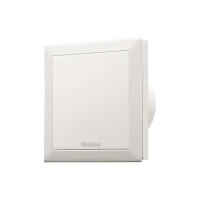
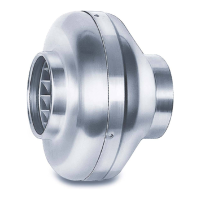
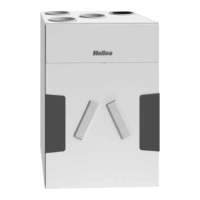
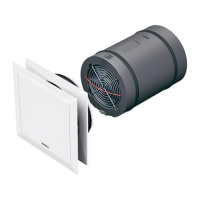
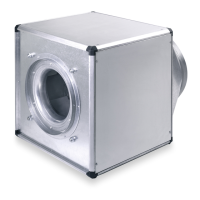
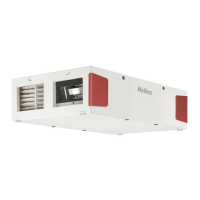
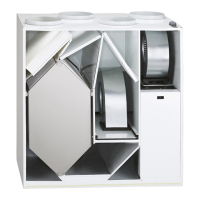
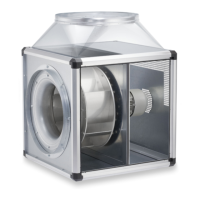




